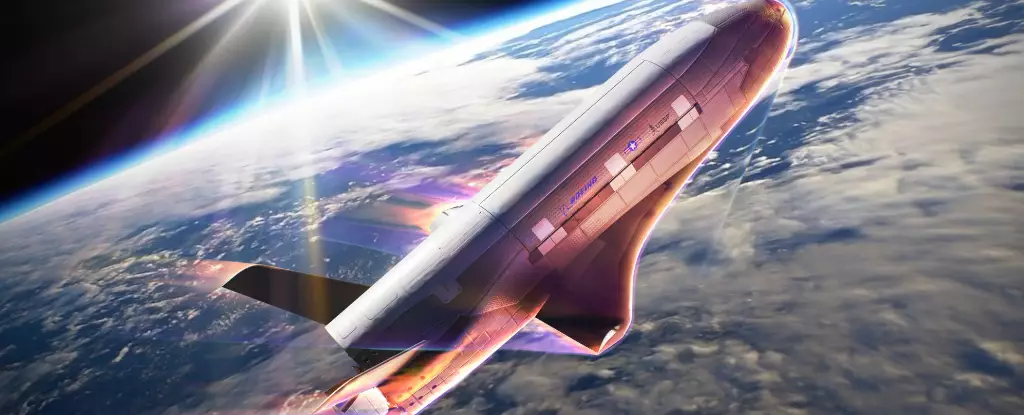The X-37B Orbital Test Vehicle (OTV) has been an enigmatic figure in the realm of space exploration since it first launched in 2011. Developed by Boeing and now operated by the US Space Force (USSF), the X-37B is a remotely controlled and reusable space plane designed for operations within Low-Earth Orbit (LEO), specifically at altitudes ranging from 240 to 800 kilometers (150 to 500 miles). As it embarks on its latest expedition, the OTV-7, which commenced on December 29, 2023, the vehicle continues to astound observers with its array of advanced technologies and its significant contributions to national security and scientific research.
The missions undertaken by the X-37B are tightly wrapped in secrecy, with the latest venture involving ground-breaking experiments focused on the impact of space radiation and the investigation of Space Domain Awareness (SDA) technologies. These aims are not just academic; they represent vital strides towards mastering the logistical and environmental challenges of long-term human presence in space. As space exploration evolves, the necessity for understanding radiation’s effects becomes paramount, particularly for future missions that aim to put humans on prolonged journeys to places like Mars.
A remarkable aspect of the OTV-7 mission is its planned execution of aerobraking maneuvers—an innovative technique designed to adjust its orbit while dramatically reducing fuel consumption. This approach marks the first occasion that the X-37B has adopted such strategies, and it’s indicative of how military space operations are advancing towards stealth and evasiveness. Using the atmosphere to decelerate and shift the vehicle’s orbital path significantly complicates adversaries’ tracking efforts and reflects a sophisticated understanding of orbital mechanics.
Aerobraking is not a novel concept in space exploration; however, its application to the X-37B introduces new possibilities for military operations. The technique has previously been utilized in missions involving Mars, where spacecraft like the Mars Global Surveyor and Mars Reconnaissance Orbiter successfully maneuvered using their solar panels to manage their descent through thin atmospheres. These methodologies underscore the advancements in flight technology and the expanding capabilities that play into national strategies as countries invest heavily in enhancing their space ventures.
The Air Force’s Secretary, Frank Kendall, emphasized the significance of these maneuvers, remarking that they signal the USSF’s unwavering commitment to innovation in the domain of space. This aligns with broader trends in military strategy, where the realm of conflict has expanded to include outer space, necessitating new technologies and tactics to maintain superiority against potential adversaries.
Despite its impressive technical achievements, the X-37B’s true capabilities remain largely obscure to the public eye. The secrecy surrounding its operations breeds speculation about its actual role in national defense. During a notable discussion at the Aspen Security Forum in 2019, former USAF Secretary Heather Wilson articulated the vehicle’s unique orbital capabilities that lend it a significant advantage in maintaining stealth. The ability of the X-37B to adopt non-linear orbits—potentially evading detection while remaining close to Earth—creates a tactical advantage that could be unsettling for adversarial nations.
Experts like Jonathan McDowell have pointed out that these orbital techniques introduce complexities in tracking efforts, thereby overwhelming enemy monitoring systems. As such, the constant friction between secrecy and operational effectiveness has fostered a dialogue about the extent to which cutting-edge technology shapes contemporary warfare dynamics.
As the X-37B continues its journey through the cosmos, it is engaged in a series of carefully planned experiments that will not only explore the physical implications of space radiation but also push the boundaries of SDA technologies. One particularly innovative experiment involves studying the effects of cosmic radiation on plant seeds, aptly dubbed the “Seeds-2” project, provided by NASA. This research could have sweeping implications for future human endeavors in extraterrestrial environments.
Additionally, the USSF has prepared for the X-37B to adhere to strict protocols regarding space debris management, with plans to eject select service module components in alignment with contemporary standards. After fulfilling its mission objectives, the spacecraft will make its way back to Earth, completing another cycle of high-stakes testing that straddles the line between scientific inquiry and military prowess.
In summation, the X-37B represents a unique confluence of technological advancement and strategic military insight. As future missions unfold, they will likely offer profound insights not only into the mechanics of space but also the evolving nature of global conflict. The delicate interplay between exploration, innovation, and security continues to shape our understanding of space as an increasingly contested frontier.

Leave a Reply